Army Pushes Missile Defense For Tanks: MAPS
Posted on
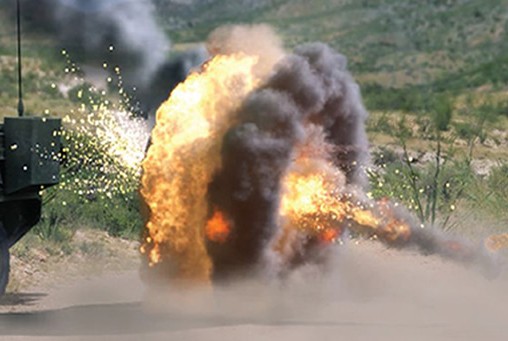
Raytheon Quick Kill Active Protection System
[UPDATED with details on $90 million plus-up from House defense bill, total contract values] Alarmed by deadly battles in Ukraine, the Army wants to place miniaturized missile defense systems on its armored vehicles to protect them from anti-tank weapons. To reach this high-tech holy grail, which has painfully evaded the service in the past, the Army is taking a two-track approach. The fast track, as we’ve written previously, is to test off-the-shelf systems, like the Israeli Trophy, that are used today. But today’s defenses may fail against tomorrow’s missiles.
That’s why the Army is also pursuing a long-term alternative, a Modular Active Protection System designed to be easily improved as new dangers emerge. The vision for MAPS is a suite of plug-and-play defenses adaptable to different threats and to different Army vehicles.
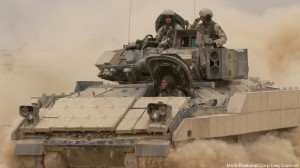
M2 Bradley, on which the Army will test off-the-shelf Active Protection Systems
The tank and electronics arms of the Army’s Research, Development, & Engineering Command (RDECOM) have awarded a half-dozen contracts for various parts of MAPS, starting in 2014. Northrop Grumman, BAE Systems, and L-3 Mustang Technologies are developing sensors to detect missiles approaching at hundreds of miles per hour, figure out which ones might actually hit, and sound the alarm in time for the rest of the system to stop them. Northrop Grumman and Artis are developing the countermeasures, on an actual combat vehicle, and MAPS demonstrations are scheduled for 2017.
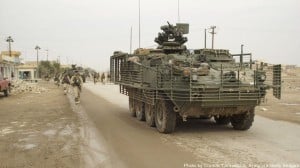
The Army will also test APS on wheeled Strykers
Why does the Open Architecture Processor matter? Current active protection systems are hard-wired together. Trophy, for example, comes with its own radars that tell it when and where to shoot. That’s great as far as it goes, but it’s not too adaptable. What if the enemy figures out how to jam your current radars? Then you’d really like to swap in another sensor as soon as possible. What if the enemy fires something, like a solid tungsten shell, that your current hard-kill weapon can’t shoot down? Then you’d really like another kind of countermeasure, one that can mislead the enemy into missing you altogether.
In short, to keep adapting to ever-evolving threats, you want a Modular Active Protection System that can quickly plug-and-play new technologies: radars, infra-red sensors, jammers, decoys, hard-kill shooters, etc. etc. As long as each physical component has the right interface written into its software, adding a new tool is (in theory) as easy as uploading a new app on your phone. Systems engineers call such a system an open architecture.
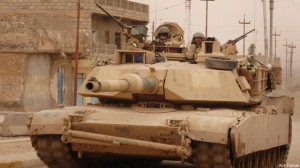
M1 Abrams tanks will also be tested with APS
Lockheed actually developed the MAPS processor for a totally different purpose: controlling sensor packages on aircraft. “This Open Architecture Processor is actually something we developed for our sensor products,” said Paul Lemmo, a vice-president at Lockheed Martin Missiles & Fire Control. “We build the Sniper targeting pod, we build the Apache targeting system, (which) require substantial processing power for the image processing algorithms,” he said. “The technology in the FLIRS (Forward-Looking Infra-Red systems) and the camera is actually changing at a much more rapid pace today than it was five years ago, (so we needed) a processor that could keep up.”
With such a rapid pace of change, a hardwired system would be too hard to rewire. So Lockheed went for a modular and open architecture, using commercial processing cards rather than old-school proprietary hardware. The resulting Open Architecture Processor will ultimately go on all the E-model AH-64 Apache gunships, the most modern variant, and may be backfitted to D models as well.
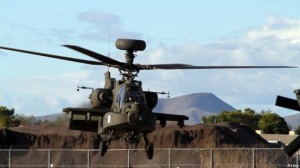
Army AH-64E Apache Guardian
Because OAP prototypes were already flying in Army tests for the Apache targeting system, Lockheed found it an easy sell to the service for the Modular Active Protection System. But isn’t running the sensor suite on an aircraft very different from running the defensive systems on a ground vehicle? No more than running two different apps on the same kind of phone, Lockheed argues. “There’s not necessarily anything you have to do in the hardware, in the processor itself,” Lemmo told me. “It’s really the software…that will interface those effectors and weapons.”
Of course, as the Joint Strike Fighter program proves, writing (and rewriting) software for military systems is hard enough. But Lemmo is cautiously confident that Lockheed’s Open Architecture Processor can connect not just with hardware being developed for MAPS, but with the off-the-shelf systems now in testing.

Paul Lemmo, Lockheed Martin
“Should we go off and integrate this with a Trophy or an Iron Fist or any of the other systems [in testing], we’ve looked at that and think that it’s feasible,” Lemmo said. Lockheed’s only done a top level look, he cautioned, since it doesn’t yet have access to the proprietary details of other companies’ products. But once Lockheed has the data and can code the proper interface, he said, you could plug-and-play off-the-shelf systems as easily as if they’d been developed specifically for MAPS. You could mate a Trophy hard-kill weapon with a new sensor, for example. Or you could pair Trophy with a jammer and have the Open Architecture Processor decide whether to use one, the other, or both against a particular threat.
“Putting an open architecture around these systems would allow the Army to make adjustments or changes to the system more easily (and) keep up with the threat in a much quicker way,” Lemmo said. “With proprietary systems it takes a longer time, takes a lot more money to make changes.”
I ran this ease-of-update logic by a Hill source who’d been skeptical about the Army developing its own Modular Active Protection System when there were already so many commercial-off-the-shelf systems already in existence. Well, that makes sense, the congressional staffer said on hearing the argument. “The Army seems to be willing to keep MAPS going as the long term solution while looking at COTS-ish things as a near-term fix, which I think is a reasonable approach — if they can afford to do both.”
[UPDATE: The House Armed Services Committee is certainly trying to help. Its draft of the annual defense policy bill, released this afternoon, adds $90 million to the Army’s requested budget for “Vehicular APS” (Active Protection Systems). A HASC staff explained all of it is for off-the-shelf upgrades such as Trophy. $80 million is listed under modifications to the M1 Abrams tank, but would also cover the tracked M2 Bradley infantry fighting vehicle (the basis of a growing family of war machines) and the eight-wheel-drive Stryker troop carrier; $10 million is under research, development, testing, & engineering for these “non-developmental” systems. MAPS didn’t receive a plus-up, but it’s early days yet, with Lockheed’s contracts to date totaling just $10.6 million over three years, 2015-2017].
Subscribe to our newsletter
Promotions, new products and sales. Directly to your inbox.
